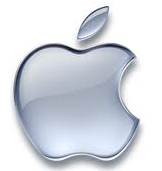Definition
The definition of elusive [e·lu·sive] according to Dictionary.com is twofold: 1) hard to express or define and 2) skillfully evasive: ‘a fish too elusive to catch.’
Especially in business-to-business content makes all the difference. I’m not asmuch referring to the glossy corporate brochure or the annual report. Coming from corporate communications. I do refer to content coming professionals, experts. People of flesh and blood. Who excel at and are willing to share their vision on eg managed services in IT (the system architect), the most recent developments in corporate law (the attorney) or this month’s best insights in the world of new media (the B2B marketing consultant).
When selling your products and services in B2B remains as cumbersome as shown in this video you do have an issue. The sales cycles in B2B of course tend to be a lot longer and more complex, (mutual) interests are more significant and the decision making unit usually is more diverse than going to your local grocery store around the corner.
In B2B and B2C alike, the process of ‘helping to buy’ however essentially is all about enabling the customer (or prospect) to confidently take the steps of a flight of imaginary stairs. In order for the customer to take steps in terms of preference, buy and loyalty. Selling in B2B therefore does not need not be rocket science.
The scenes in the video embedded in this post are over the top. In Business to Business however all too often there are easily one or more similarities to the examples shown. Professional services companies that are requested to provide ‘two consultants and charge only one’. IT vendors that are expected to integrate their new mobile app free of charge in the existing ERP software. Or – recognize the situation? – a prospect with an ill-defined assignment running a series of ‘qualification workshops’ with a number of potential ‘business partners’.
Perhaps it’s worth your while to show this video on your iPad during a difficult customer meeting. Prevention however is smarter in B2B sales and marketing. Starting off by choosing the right customers. And by determining what value to create for them.
Want to know more? Download the DutchmarQ whitepaper ‘more enthusiastic customers, by less marketing in B2B?’.
By now, most corporate websites in B2B and B2C sport one or more social media icons on their homepage. Social media nowadays seem to be a ‘must have’, whether as reference to a corporate blog, facebook page or twitter webcare channel. Or are they?
Apple shows how to build an infectious movement around truly people-centric products and solutions. Apple proves that going social does not depend on having the right social media icons pop up online. There are even no ‘share’ buttons on specific Apple landing pages.
I’m convinced Apple does intensively listen to their relevant audiences, physically as well as online and via social media. Not because market research is in the company’s DNA. After all, Steve Jobs was reknown for regularly pushing back on doing market research as customers would not be able to show the way to true breakthrough innovation. But because of Apple’s quest. The quest which has been making great products to enable people to offer as pleasant an experience as possible in their daily life and work.
For a long time Apple has recognized the power of these social elements (in random order):
The need for a technology company to build truly great products, people would want to talk about.
Designed around the user, ‘less is more’ has been Apple’s leitmotiv for a long time. Offering little upfront insights into new products has built to the mystery surrounding product launches, stimulating speculation to go viral. Apple even went as far as censoring certain bloggers for releasing news on the new iPhone prior to formal market introduction.
The human tendency to want to stand out, by belonging to a different tribe. Ever since the famous 1984 Macintosh launch, Apple has successfully appealed to and built up the community of people wanting to express themselves through their choice in technology.
Word of mouth. Lots of word of mouth. Social media is all about the power of people doing the talking. Rather than you doing the advertising. Apple has been a master at both.
Customer psychology. Apple has shown time and time again to understand selling stuff first and foremost has everything to do with understanding people’s needs, wants and issues. And then meeting or resolving them in the best way possible. Whether its using a computer, listening to music, crafting a presentation or shopping, Apple has ensured to make the customer journey as enjoyable as possible. Thereby helping to spread the Apple story like seeds from a pod (the name iPod even was derived from a pod containing 1000 seeds i.e. songs).
Focus and simplicity. By focusing on a limited amount of products and solutions all very easy to use, Apple has successfully fueled the story on the Macintosh, iMac, iPod, iPhone and other Apple products and services.
Great products simply produce great enthusiasm. Apple products have always been engineered with a quest for the highest quality and best user experience. This in turn simply has produced a vast community of superpromoters and hardly any distractors.
A final note. Yes, I’m an Apple fan and yes I have been reading the Steve Jobs biography lately. Both factors inspired me to write this blogpost. I do find it intriguing how a company that has seemingly been run in an autocratic, closed, and ‘non transparent’ fashion can prove to be such a strong and sustainable social movement. To me this shows, there is no ‘one size fits all’-recipe for building social business.
Want to discuss how to make ‘social’ work for your business? Do drop us a note and we’ll usually be in touch within 23 hours.
‘Magnetic marketing’ is both fact- and psyche-based. Instead of being based on the combination of hard facts on the one hand, and true insights into customer behavior on the other, marketing and marketing communications too often are based on assumptions. How to best leverage psychology in B2B marketing?



